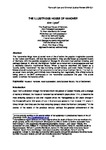The Illustrious House of Hanover
| dc.contributor.author | Lyon, Ann | |
| dc.date.accessioned | 2017-03-29T11:00:23Z | |
| dc.date.accessioned | 2017-04-11T11:33:24Z | |
| dc.date.available | 2017-03-29T11:00:23Z | |
| dc.date.available | 2017-04-11T11:33:24Z | |
| dc.date.issued | 2015 | |
| dc.identifier.citation |
Lyon, A. (2015) 'The Illustrious House of Hanover', Plymouth Law and Criminal Justice Review, 7, pp. 10-26. Available at: https://pearl.plymouth.ac.uk/handle/10026.1/9018 | en_US |
| dc.identifier.issn | 2054-149X | |
| dc.identifier.uri | http://hdl.handle.net/10026.1/9018 | |
| dc.description.abstract |
The Hanoverian kings have attracted none of the affection the popular imagination accords to the Tudors and Stuarts, still less the romanticism. They are dismissed as a boorish bunch of Germans, with the possible exception of George III, who went mad and lost America, and perhaps George IV, who left the Brighton Pavilion as a monument to extravagance and had a decidedly colourful matrimonial history. When a reporter described the Queen as a 'scowly, jowlly Hanoverian', he was not being complimentary, and even Diana Princess of Wales once attributed many of her problems to marrying into a ‘German’ family. The truth is, as usual, more complex and infinitely more interesting, but, regrettably, little official notice is being taken of the 300th anniversary of the Hanoverian succession this year. This article seeks to redress the balance a little. | en_US |
| dc.language.iso | en | en_US |
| dc.publisher | University of Plymouth | |
| dc.rights | Attribution 4.0 International (CC BY 4.0) | * |
| dc.rights.uri | https://creativecommons.org/licenses/by/4.0/ | * |
| dc.subject | House of Hanover | en_US |
| dc.subject | royal succession | en_US |
| dc.subject | constitutional history | en_US |
| dc.subject | Act of Settlement | en_US |
| dc.title | The Illustrious House of Hanover | en_US |
| dc.type | Article | en_US |
| dc.type | Article | |
| plymouth.volume | 7 | |
| plymouth.journal | The Plymouth Law & Criminal Justice Review |



